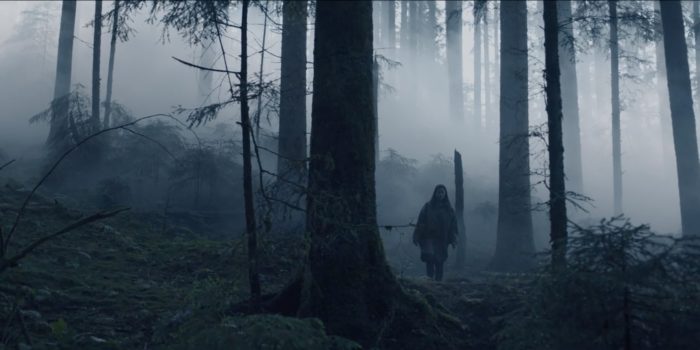The Forest for the Trees
I recently finished watching a French mystery series on Amazon Prime called Black Spot. No, it’s not about buried treasure and a silvery fellow in his long johns. I think “Black Zone” would be a more apt title, as everything in this claustrophobic show is as grim as can be. Gloomy weather, sullen-faced villagers, loitering crows, a very high homicide-per-capita rate, and some of the most breathtaking forest scenery to grace the screen.

Image copyright France 2
But this forest isn’t bursting with vibrant greenery that sings to the majesty of creation. If there is such a thing as a Gothic forest without being artificially Goth-ified ala Tim Burton, Black Spot has found it. There is such dread and foreboding in the sweeping aerial shots and ground-level views of towering trees, it would be completely believable if the forest itself was responsible for the weirdness happening in the small, secluded village (spoilers, perhaps?). The locals have a fearful reverence for the forest that transcends normal survival instinct.
We’ve seen this countless times in books, movies, and TV programs. “There’s something out there…” has become a well-trodden path to goose the audience and prepare them for woodsy weirdness. The Wendigo appears in Native American folklore and Stephen King novels, and the Blair Witch Project brought everyone’s campfire fears to life. The abundance of life (and death) that takes place in a forest stokes a different kind of fear in us than a wind-swept desert or frigid, snow-capped mountains. All of these landscapes have their own dangers but the fear that a forest can stir up is something like the fear of a vast body of water: you don’t know what lurks within its depths. A forest in particular can echo with strange sounds yet nothing can be seen except silent trees. If you’ve ever been out in the woods at night with a feeble flashlight, you know the feeling.
There is an eagerness in the human imagination to revere the “spirits of the forest.” Ancient cultures saw spirits in everything but there seems to be something more personal with the forest. The mountains stand tall and distant, the ocean seems infinite and untamable, but we walk in the forest. We are surrounded by trees like columns and leafy canopies that soar like cathedrals naves. And unlike any other landscape, the forest gives us everything we need to live: food, fuel, clothing, and building material. It’s very easy how the forest can become an idol or a “god” of sorts, and even in our post-religious society, these impressions still echo in our minds.
As human beings, we should naturally have a healthy fear and respect for the forest, which would gladly consume us without a second thought. When we walk into the forest, we are simply part of the circle of life. As Christians, we know that the pagan myths are simply campfire ghost stories, despite their reverential treatment in entertainment. But there is a vitality and synergy in the forest that makes it seem almost like a single, conscious entity, and it is easy to become enamored with this fearfully romantic notion and lose sight of the Creator of that life and vibrancy. The forest is simply a giant city with billions of creatures doing what they do in a fallen world. It may be the Valley of the Shadow of Death, but God is always with us.






































